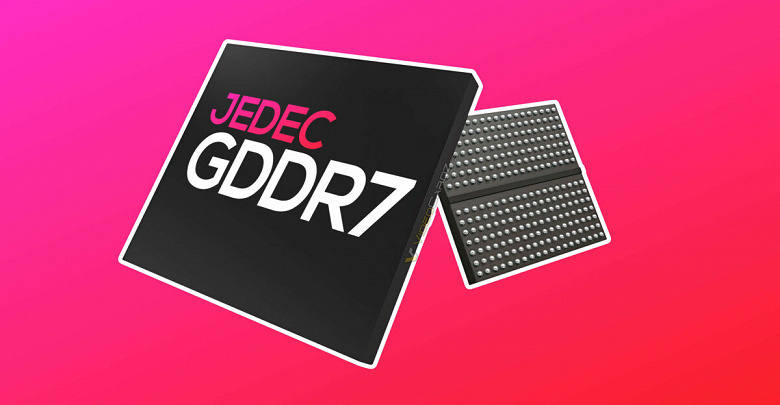The frequency can reach at least 37 GHz
The JEDEC Association announced the adoption of the GDDR7 graphics memory standard.
Of course, this does not mean that such memory will appear in consumer devices in the very near future, but let us recall that rumors have long attributed it to at least the GeForce RTX 5090 video card.
JESD239 GDDR7 — It is the first JEDEC DRAM to use a pulse amplitude modulation interface for high frequency operations. Its PAM3 interface improves the signal-to-noise ratio for high-frequency operation while improving power efficiency. Using 3 levels (+1, 0, −1) to transmit 3 bits in 2 cycles compared to the traditional NRZ (non-return to zero) interface transmitting 2 bits in 2 cycles, PAM3 provides higher speed transferring data in one cycle, which leads to improved performance.
Additional advanced features include:
- core-independent LFSR (linear feedback shift register) training patterns;
- doubling the number of independent channels from 2 in GDDR6 to 4 in GDDR7;
- Supports densities from 16 to 32 Gbit, including support for dual-channel mode to double system throughput.
Meeting the market need for RAS (Reliability, Availability, Serviceability) by introducing the latest data integrity features including On-Chip ECC (ODECC) with real-time reporting, data validation, error checking and scrubbing, as well as the parity of command addresses with command blocking (CAPARBLK).
JEDEC does not talk about frequencies, but let us recall that Samsung has previously talked about memory with an effective frequency of 37 GHz, although there will be chips with frequencies from 32 to 36 GHz. With such high values, the memory bandwidth of the new generation of video cards will be much higher than that of the current ones. That is, a conventional video card with a 384-bit bus with such memory will have a throughput of 1.7 TB/s. In general, the increase compared to GDDR6X will be huge, since the latter usually operates at frequencies of 20–23 GHz.

